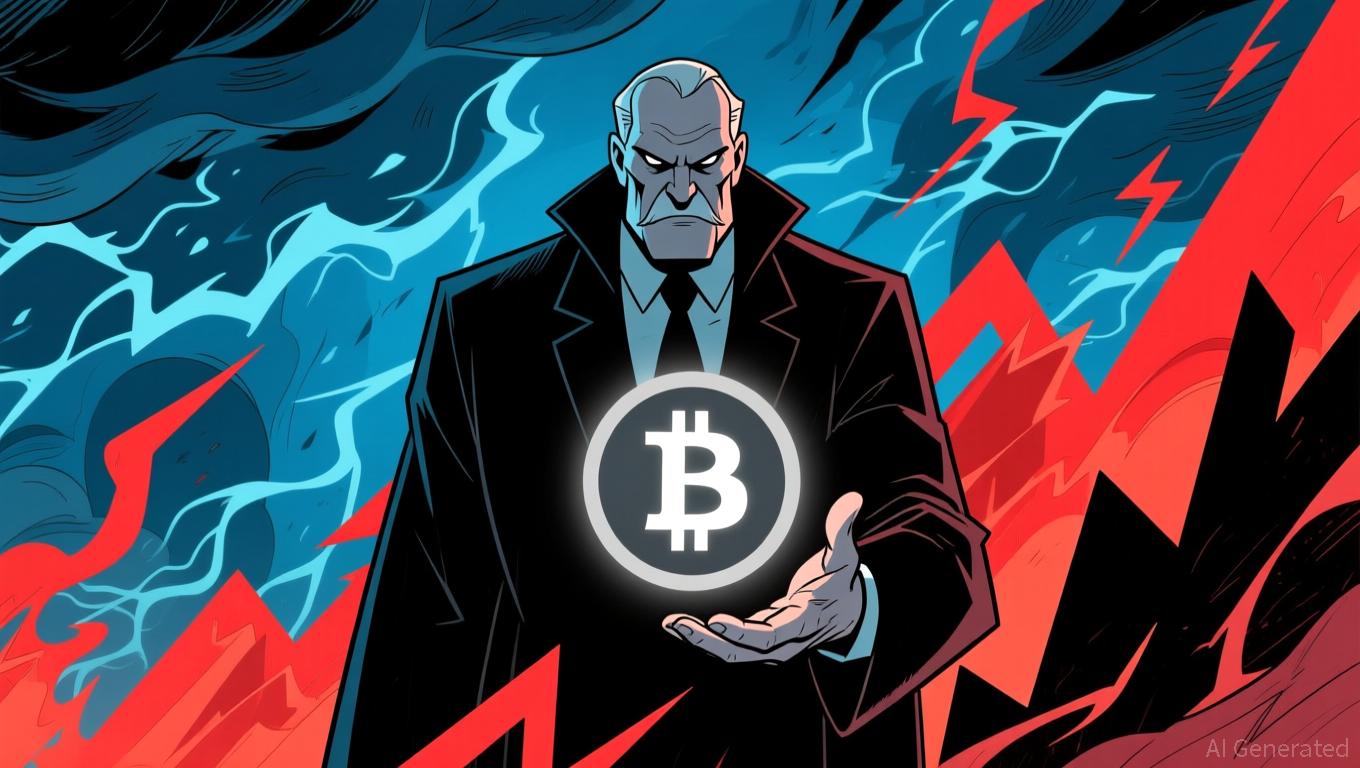Deciphering the Growth of Hyperliquid in Institutional Trading
- Hyperliquid, a decentralized derivatives platform, surged to $47B weekly trading volume in 2025 through fee cuts and EVM-compatible infrastructure upgrades. - Institutional adoption accelerated via Safepal integration, SEC S-1 filing, and $1B HYPE token buyback initiatives with Paradigm-affiliated partners. - USDH stablecoin (backed by BlackRock/Stripe) and 21Shares' SEC-approved ETF proposals highlight DeFi-TradFi convergence through institutional-grade security. - Despite regulatory risks and competiti
On-Chain Derivatives Innovation: A Catalyst for Growth
In 2025, Hyperliquid’s technological breakthroughs played a crucial role in boosting liquidity and expanding the market. The rollout of HIP-3 growth mode in November 2025
Alongside these fee cuts, Hyperliquid’s HyperEVM and Unit layers, launched in February 2025, strengthened its infrastructure by supporting
Institutional Adoption: Bridging DeFi and TradFi
Hyperliquid’s growth among institutional users has been propelled by targeted partnerships and regulatory progress. A prime example is its partnership with Safepal, a top crypto wallet provider,
The platform’s S-1 registration with the U.S. Securities and Exchange Commission (SEC) in 2025 marked a significant step toward integrating with traditional financial markets. By raising up to $1 billion through a public listing and merging with Sonnet BioTherapeutics and a SPAC,
Institutional trust is also reflected in the creation of Hyperliquid Strategies, a digital asset treasury (DAT) focused on acquiring HYPE tokens.
Case Studies: USDH and the HYPE Token Ecosystem
Hyperliquid’s USDH stablecoin, introduced in 2025, marks a pivotal advancement in its institutional integration.
The HYPE token has also drawn institutional attention through initiatives such as 21Shares’ proposed U.S. SEC-approved ETF,
Future Outlook and Challenges
Despite Hyperliquid’s rapid expansion through innovation and alliances,
In summary, Hyperliquid’s ascent in institutional trading is fueled by its on-chain derivatives breakthroughs, strategic collaborations, and proactive regulatory engagement. As the boundaries between DeFi and TradFi continue to
Disclaimer: The content of this article solely reflects the author's opinion and does not represent the platform in any capacity. This article is not intended to serve as a reference for making investment decisions.
You may also like
Crypto Market Hits Historic Buy Zones Amid Downturn
Bitcoin Drops Below $81,000 Amid Market Volatility
Trump Removes 40% Tariffs on Brazilian Commodities
Bitcoin Updates: Bitcoin's Sharp Decline Highlights ECB Doubts Amid Changing Cryptocurrency Environment
- Bitcoin fell below $90,000 amid ECB President Lagarde's persistent "worth nothing" stance, erasing 2025 gains and causing 13% average investor losses. - Lagarde reiterated Bitcoin's "highly speculative" nature despite its 2025 record high, contrasting with global digital asset adoption and ECB's digital euro project. - Market analysts debate a potential rebound near $87,000, while ECB warns of stablecoin risks amid 48% 2025 volume surge and U.S. regulatory shifts. - ECB's digital euro initiative aims to
